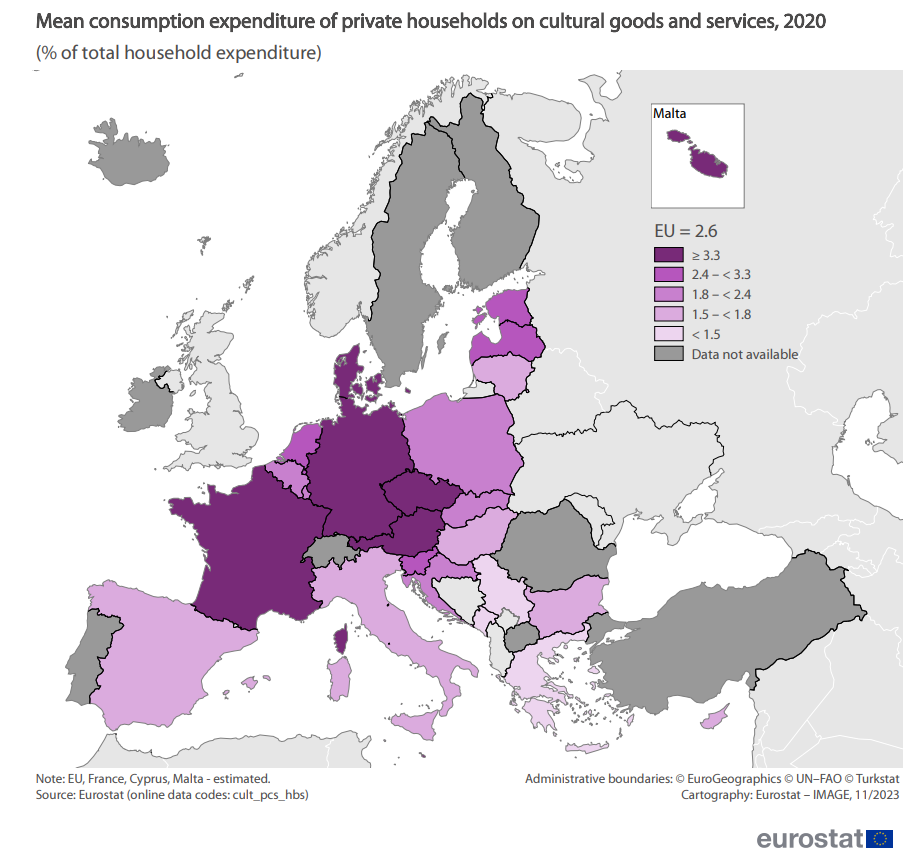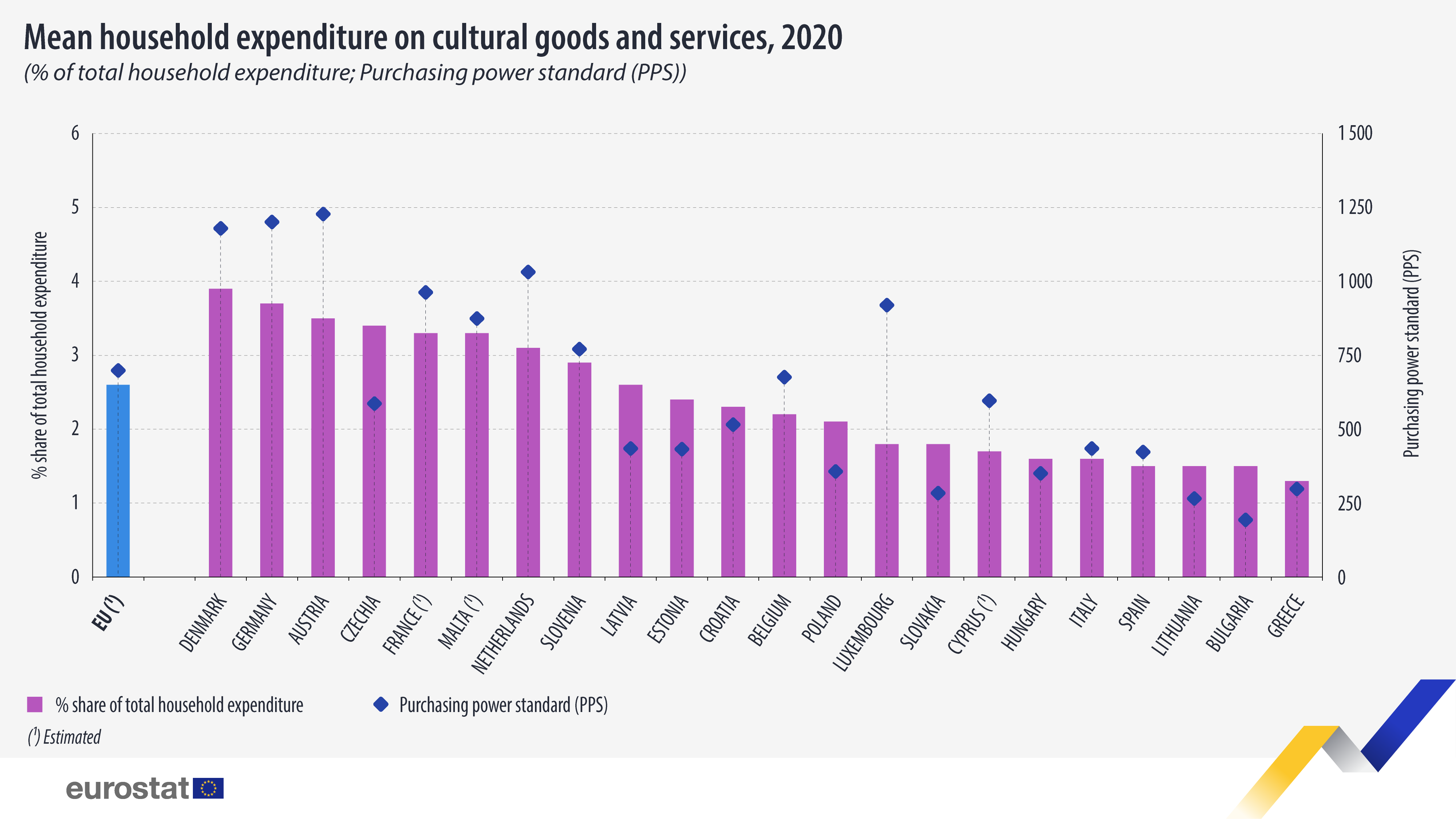Eurostat published new statistics showing the households' expenditure spent on culture in 2020 across Europe and the results have a lot to say.
From our daily music playlist to our monthly night outs in theaters and cinemas, art and culture are a big part of our everyday lives. But how much money do we spend on our cultural activities?
In 2020, households in the EU spent, on average, an estimated 2.6% of their total expenditure on cultural goods and services. The numbers varied from one country to another, keeping in mind the wage gap and other factors that might impact this share, including household income, price levels, the ease of access to cultural venues, national cultural policies, and habits.

On the top of the list, counting the highest percentage of household budget spent on cultural purposes is Denmark (3.9%) followed by Germany (3.7%) and Austria (3.5%) with small differences.
The results don't come by surprise since Denmark, Germany and Austria count a large number of available cultural events, open calls and related initiatives to support their national cultural and creative sector.
Among 13 EU countries, at the bottom of the list with the smallest share of household expenditure on cultural goods and services and below the average at the EU level, stands Greece (1.3%), followed by Bulgaria (1.5%), Lithuania (1.5%) and Spain (1.5%).

During the Covid-19 pandemic Greece also faced a cultural crisis, with Greek artists gathering up to create a national movement called Support Art Workers, protesting about equal rights and fair payment. Even though the protests lasted for months and had a huge impact on the greek society, up until today the national budget dedicated to culture doesn't include an emergency plan in response to the health crisis that has impacted the entire sector.
Taking a closer look on the most common expenses for cultural activities, Eurostat published that on average, around one-fourth of the EU households' expenditures on culture in 2020 went on computer and audio-video equipment (26.9%), another one-fourth on books and press (25.1%), one-fifth (20.8 %) on broadcasters’ fees and hiring of equipment and accessories for culture, and 13.7% on attendance and entertainment, leaving the remaining 13.5% for articles of artistic expression and creation.
Eurostat's statistics are a great opportunity to reflect on the way we perceive art and culture and how much we value the work of the people behind the sector.
Find Eurostat's statistics here
Myriam Patrou










